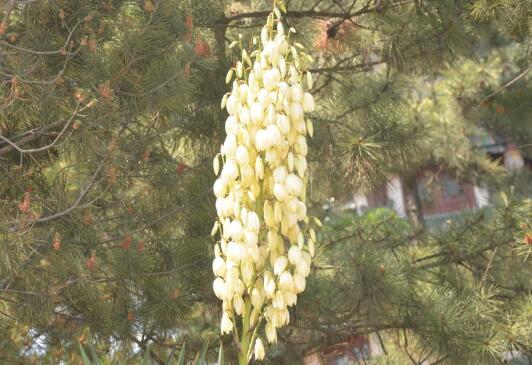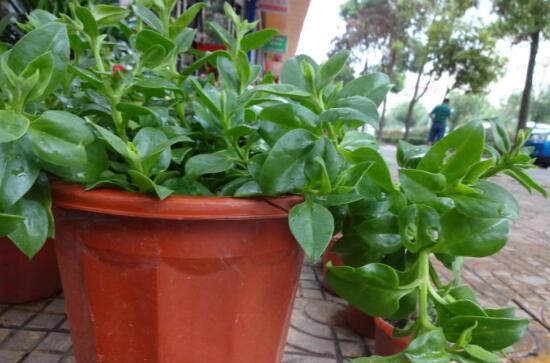What to do when buttercups grow insects? pest control of buttercups / 2 insect pests 2 diseases
In the growth process of buttercup, the last thing we want to encounter is diseases and insect pests, this kind of problem is very harmful to the plant, and when it is serious, it will lead to plant death. So what should we do when buttercups grow worms? What should be done to prevent and control diseases and insect pests of buttercup? Next, the editor will take you to learn about it.
First, what if the buttercup grows into worms? find the reason.

If we want to know what to do with buttercup worms, we must first understand what kind of insects grow, so that we can deal with them pertinently, because the prevention and control methods of each kind of diseases and insect pests are different. Details are introduced below, friends who are troubled in this respect can learn about it.
II. Pest control of buttercup (pest)
1. Liriomyza sinensis
Liriomyza huidobrensis this pest will gradually eat the leaf tissue of buttercup, thus forming a serpentine white submersible channel, its excrement is black continuous linear production in the passageway, adults lay eggs and feed on round spots, and in serious cases, it will also lead to the phenomenon of plant death.
Control method: the high incidence period of this pest is from February to April every year, at this time we must pay more attention to it. When dealing with the diseases and insect pests of this buttercup, we can directly use 5000 times the solution of miramine wettable powder to spray it.
two。 Aphids
Aphids are one of the most destructive pests on earth, which are harmful to many plants, and buttercup is one of them. The main damage of this pest is that adults and nymphs feed on leaves, stems, tender heads and tender panicle sap, resulting in a large loss of plant nutrients and wilting.
Control method: when we deal with the diseases and insect pests of this buttercup, we can spray it with 2000 times of imidacloprid wettable powder.
III. Pest control of Ranunculus chinensis (disease)
1. Mosaic disease
Mosaic disease is a worldwide virus disease. During the onset of the disease, chlorotic horny spots will appear on the leaves of Ranunculus, and the color will gradually turn brown with the passage of time, and at the same time, it will also lead to the problem of leaf deformation and yellowing. In serious cases, it will also affect the yield and quality of cut flowers.
Control methods: for this kind of buttercup diseases and insect pests, we can use healthy seedlings, not from the diseased plants to propagate, but also spray insecticides to control the plants.
two。 Penicilliosis
This disease mainly occurs in the storage period of root tuber and sometimes occurs in the growing period. when the disease is serious, the surface of storage root will be covered with a large number of conidia of Penicillium, which is easy to infect healthy root tuber, and it will lead to plant rot if it is not treated in time.
Control method: when we deal with the diseases and insect pests of this buttercup, we can use 75% metobuxine 800 times solution to soak the damaged root block for 10 to 15 minutes, and then dry it and replant it, which can reduce the possibility of the disease.
Identification and Control of Diseases and insect pests of Ranunculus
The pathogen of virus disease is buttercup mottle virus or cucumber mosaic virus. The symptoms of injury are as follows: the leaves are wrinkled and uneven, showing mosaic, chlorotic spots, or leaf atrophy and thickening. The leaf margin turns toward the leaf surface or the back of the leaf, and the petiole becomes shorter and tufted. The injured flowers are twisted and cannot blossom when they become smaller. When the damage was serious, the diseased plant was obviously dwarfed, atrophied and died. The virus is often parasitic on tuber roots or seeds. When the virus is sown or planted with poisonous seeds in production, the incidence of seedlings is higher. In addition, the virus may also be transmitted from aphids, Liriomyza huidobrensis and leaf miner to buttercup during the growing period, causing virus disease. If the seeding bed is too dense or the pot distance of peanuts is too small for a long time, the plants will also spread diseases to each other. Prevention and control methods: 1. Strengthen plant quarantine to prevent the introduction of poisonous seeds, roots and plants into disease-free areas. two。 Remove the virus strain in time, burn it centrally, and reduce the spread. 3. Strengthen cultivation management, reasonable fertilization and watering, pay attention to ventilation and light transmission, so as to make the plant grow healthily and improve disease resistance. 4. Spray 10% imidacloprid wettable powder 1000 times or 40% omethoate 1000 times to kill aphids, leaf miners, Liriomyza huidobrensis and other virus-transmitting insects. 5. At the initial stage of the disease, 68% virus wettable powder, 3.85% virus Bike wettable powder, or 7.5% Keduling water agent were sprayed for prevention and control.
Disease Control methods of Ranunculus
Buttercup white silk disease
Disease symptoms
White silk disease is mainly due to poor ventilation conditions of the plant, low soil nutrients, infection of bacteria, the initial emergence of water-stained light brown irregular spots at the base of the stem, and then white silk hyphae in the diseased part. gradually wound into rapeseed sclerotia.
Prevention and cure method
Strengthen management, pay attention to ventilation and light transmission, properly control watering to avoid soil over-wetting. Turn the basin and change the soil in time, do not let the soil solidify.
Check in time and remove the diseased plant immediately. At the same time, to disinfect the soil in time, we can choose carbendazim solution to irrigate the root to control the development of the disease.
Ranunculus penicillium
Disease symptoms
The disease mainly occurs in the storage period of the bulb and rarely occurs in the growing period. The infected root will appear dark brown or black. When the disease is serious, there are a large number of penicillin conidia on the surface of the root tuber. If the root tuber is damaged during harvest or stored in a place with poor ventilation and high air humidity, penicilliosis is easy to occur and the damage is serious.
Prevention and cure method
In the process of harvest, storage and propagation, the damage should be reduced as much as possible, the root tuber should be protected intact, and the root tuber should be thoroughly disinfected before storage.
In the process of storage, pay attention to adjust the temperature of the storage place, strengthen ventilation and reduce humidity. Often check, find the root tuber infected by Penicillium, clean up in time, try to avoid infecting other root tuber.
Buttercup virus disease
Disease symptoms
When the plant is sick, the leaves are wrinkled and uneven, showing mosaic, chlorotic spots, or leaf atrophy and thickening. The injured flowers grow malformed and become smaller or even unable to bloom. When the damage is more serious, the diseased plant will obviously dwarf, atrophy and die.
Prevention and cure method
Strengthen cultivation management, reasonable fertilization and watering, pay attention to ventilation and light transmission, so as to make the plant grow healthily and improve disease resistance.
Find the damaged plants and clean them up in time.
At the initial stage of the disease, 68% virus wettable powder was sprayed 3 times or 5 times.
Root rot of Ranunculus chinensis
Disease symptoms
During the growth of plants, root rot will be caused if the soil is too sticky or alkaline, low temperature and stagnant water. The root causes germs in an adverse environment, thus infecting the root, causing the root to rot, turning dark brown or black, and the stems and leaves on the ground will gradually turn yellow and wither.
Prevention and cure method
During storage, in order to prevent root rot, strictly remove the diseased root, soak it in 2% potassium permanganate solution for 15 to 30 minutes, store the root after drying, and pay attention to ventilation and humidity in the storage place.
Before planting, the cultivated soil and root tuber should be thoroughly disinfected and planted shallowly. During the growth period, pay attention to water control and loosen the soil in time.
Buttercup mosaic disease
Symptom
Chlorotic spot symptoms occur on the leaves, and when severe, the plant growth and development is poor.
Prevention and cure method
Mosaic disease in many cases is caused by insect pests, timely spraying insecticides to control aphids.
In the process of pruning, pay attention to the disinfection of tools, and the wound should be treated in time after pruning so as not to get infected with bacteria. Remove the diseased leaves as soon as they are found.
- Prev

What to do with the growing insects of Cymbidium? pest control of Cymbidium / 3 insect pests 2 diseases
In the growth process of Cymbidium, the last thing we want to encounter is diseases and insect pests, this kind of problem is very harmful to the plant, if it is not dealt with in time, the plant will gradually die. So what should we do if the Phoenix tail orchid grows worms? How does the pest control of Phoenix tail orchid need to be done? Next, the editor will take you to learn about it.
- Next

What to do with the growth of peony orchid insects? pest control of peony orchid / 3 insects and 2 diseases
As a common indoor potted plant, the efficacy of peony orchid is very strong, it is not only good-looking, but also not vulnerable to diseases and insect pests, but also has good value in edible. But in indoor farming, for some reasons, peony orchid will inevitably be infected with disease and be disturbed by insects. that
Related
- Fuxing push coffee new agricultural production and marketing class: lack of small-scale processing plants
- Jujube rice field leisure farm deep ploughing Yilan for five years to create a space for organic food and play
- Nongyu Farm-A trial of organic papaya for brave women with advanced technology
- Four points for attention in the prevention and control of diseases and insect pests of edible fungi
- How to add nutrient solution to Edible Fungi
- Is there any good way to control edible fungus mites?
- Open Inoculation Technology of Edible Fungi
- Is there any clever way to use fertilizer for edible fungus in winter?
- What agents are used to kill the pathogens of edible fungi in the mushroom shed?
- Rapid drying of Edible Fungi

